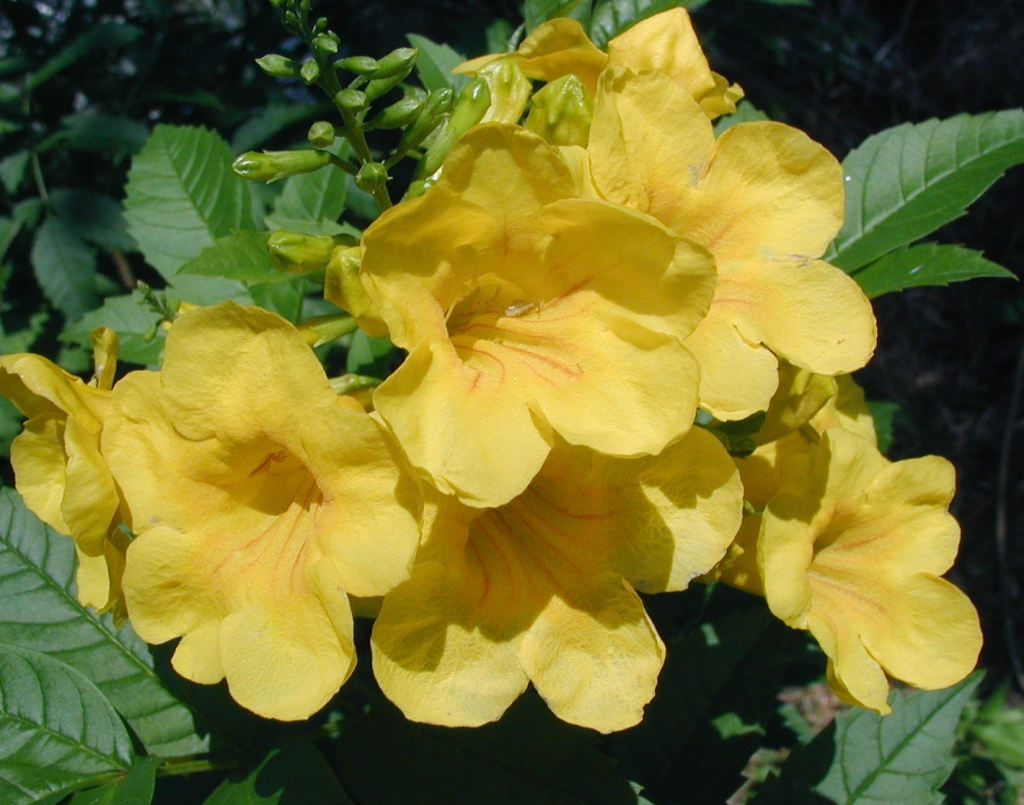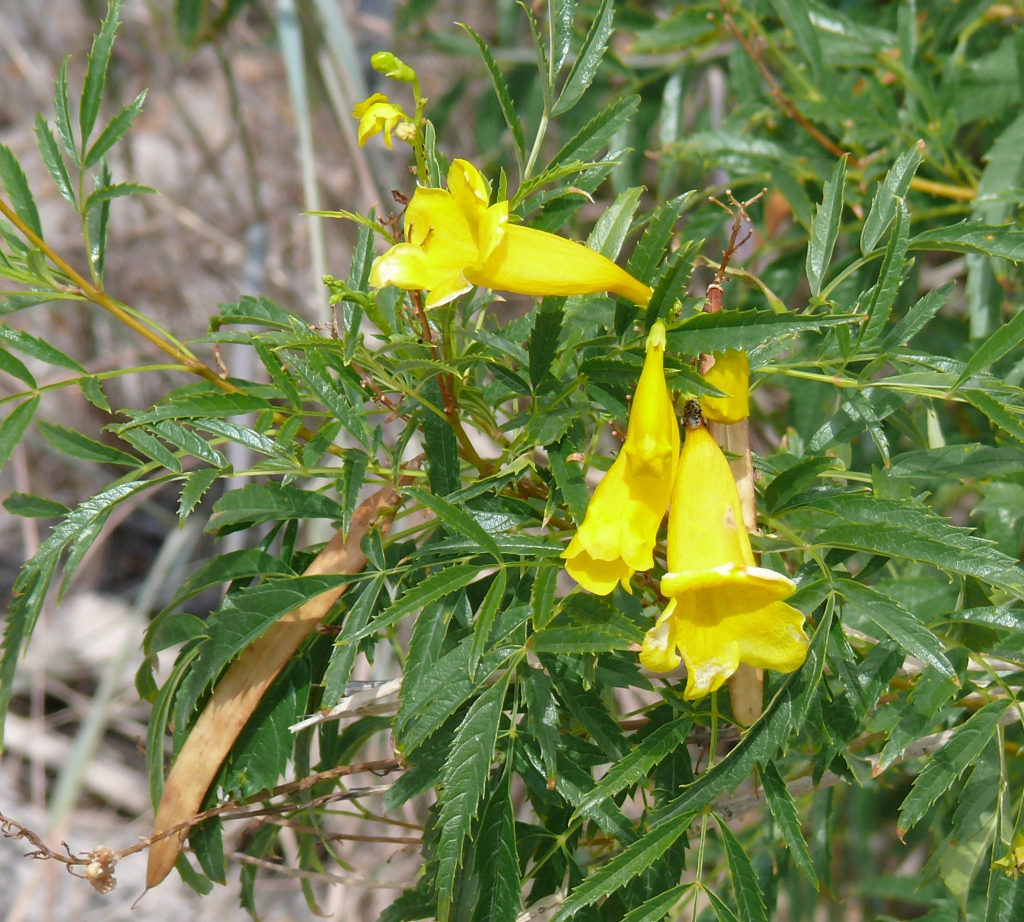Author: Bill Ward
Operation NICE! (Natives Instead of the Common Exotics!) recommendation for May is the long-blooming esperanza (Tecoma stans). This native-Texas shrub is readily available in local nurseries and does well in Hill Country gardens. As the common name “esperanza” (Spanish for “hope”) seems to suggest, this plant is our great hope for showy flowers during the heat of late summer.
Esperanza is a multibranched shrub which can grow several feet high in this area. Its abundant green foliage makes it an attractive landscape plant, even between bloomings. Leaves are several inches long and lanced-shaped with serrated margins.

Intermittently, from April to the first hard freeze, esperanza has profuse clusters of large bright-yellow trumpet-shaped flowers. The ones in our yard seem to have some of their branches in bloom almost continuously from mid summer to late fall. This plant is widely used for commercial landscaping in this area, because it so heat- and drought-tolerant.
Yellow is the usual color of Tecoma stans flowers. Other common names are “yellow bells” and “yellow trumpet.” However, an orange-colored variety also has been propagated for the nursery trade.
Esperanza is in the same family as desert willow, trumpet vine, and catalpa. Tecoma stans is not found in Marshall Enquist’s “Wildflowers of the Texas Hill Country,” because its natural range does not include the Edwards Plateau. However, it was collected nearby in Bexar and Hays Counties (“Atlas of the Vascular Plants of Texas”). It also grows from Trans-Pecos Texas to Florida, in Mexico, and in the Caribbean.
According to some taxonomists there is a western variety (T. stans var. angustata) found in the Trans-Pecos and a more tropical variety (T. stans var. stans) found in southeastern Texas and the Rio Grande Valley. The western variety has narrow, deeply incised leaflets. Whichever variety is sold in the local nursery trade seems to survive just fine in this area.
Judging from the natural habitat of the West Texas esperanza, this plant would prefer garden sites with full sun and good drainage. It is drought-tolerant. We rarely water our esperanza bushes.

Esperanza is not cold tolerant in this area. The bushes in our yard die back completely every winter, but they always send up new foliage in the spring. They seem to grow slowly at first, but begin to add foliage rapidly as the temperature gets hotter. Ours reach their flowering peak in late summer and early fall. We always look forward to their bright-yellow blooms.
In many local gardens, whitetail deer do not browse esperanza except during times of diminished food supply when overpopulation pressure becomes especially high.
The Boerne Chapter of the Native Plant Society of Texas provides free planting and care instructions for esperanza (yellow bells) at the nurseries participating in Operation NICE! (Hill Country African Violets and Nursery, Maldonado Landscape and Nursery, and Medina Garden Nursery) as well as at Cibolo Nature Center.
The first time I was aware of esperanza in the wild was on the wall of a dry limestone canyon in northern Mexico south of Big Bend National Park. Despite months of severe drought in that area, its woody branches bore clusters of yellow trumpets. Last fall we saw it blooming along a very hot, dry stream bed in Big Bend Park.
Esperanza is as tough as it is beautiful. It even bloomed during last summer’s extreme heat spell.
